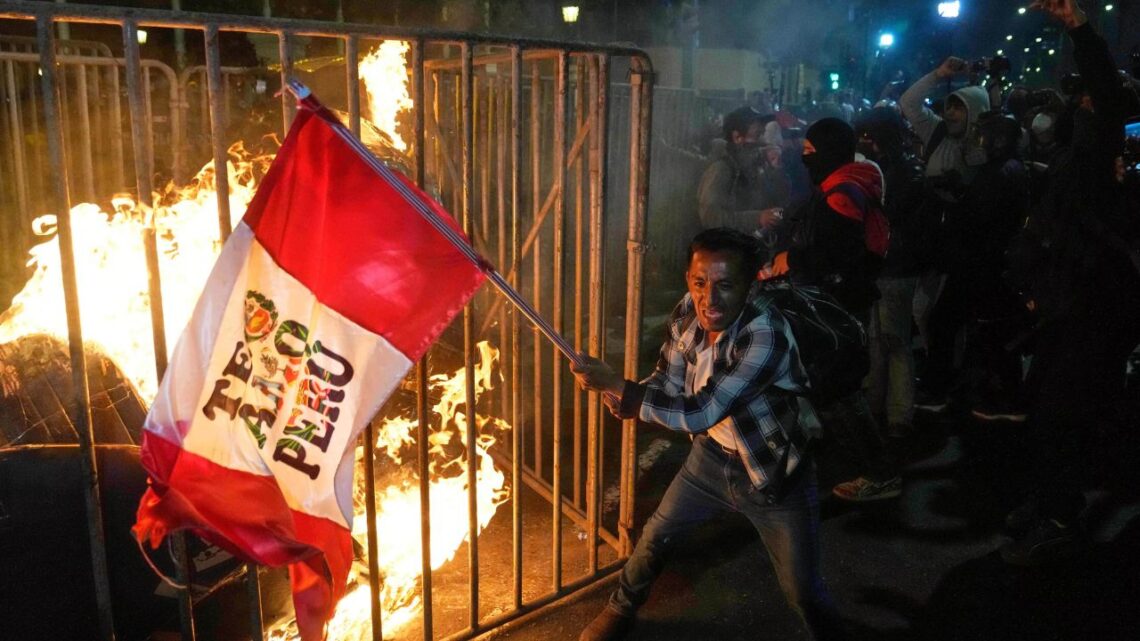Peru has entered a tense new chapter after youth-led, Gen-Z protests escalated across major cities, resulting in at least one death and over 100 injuries.
Demonstrators demand political accountability, tougher action on crime and corruption, and human-rights safeguards.
The President has declined to step down, pledging investigations into the fatality and injuries while emphasizing public order and continuity of the electoral calendar.
Key Developments
- Nationwide demonstrations: Marches concentrated in Lima’s historic center near Congress, with simultaneous gatherings reported in Arequipa, Cusco, Trujillo, and Chiclayo.
- Casualties: Authorities confirmed one fatality during clashes; medical services reported 100+ injured, including civilians and police.
- Government position: The administration has rejected resignation calls, promising a transparent inquiry into use-of-force incidents, disciplinary reviews, and attention to victim support.
- Protester demands: Young Peruvians are pressing for clean governance, safer streets, credible timelines for reforms, and safeguards for freedom of assembly.
Situation Snapshot (For Future Reference)
| Item | Details |
|---|---|
| Peak protest period | Mid-October 2025 (evening into late night) |
| Confirmed fatalities | 1 |
| Injuries (estimated) | 100+ overall (civilians and police combined) |
| Epicenters | Lima (near Congress, Plaza San Martín); additional protests in key regional capitals |
| Core demands | Resignation debates, anti-corruption push, public-security action, rights safeguards |
| Government stance | No resignation; investigations, law-and-order measures, electoral timeline maintained |
| What could change next | Inquiry findings, crowd-control protocols, legislative talks on early elections or security reforms |
Why Gen-Z Is Leading
A generation raised on social platforms, civic mutual aid, and real-time organizing has amplified frustration over inequality, violent crime, and institutional distrust.
Student unions, youth collectives, and grassroots networks are coordinating peaceful rallies, legal-aid hotlines, and first-aid brigades.
Their messaging centers on accountability, non-lethal policing standards, and transparent governance—themes that resonate far beyond university campuses.
Government Response and Next Steps
The administration has promised a multi-track response:
- Immediate investigations into the death and alleged excessive force, including ballistic, medical, and disciplinary reviews.
- Operational audits of crowd-control tactics to reinforce proportionality and de-escalation.
- Dialogue channels with student leaders, human-rights advocates, and civic organizations to reduce tensions.
- Security actions targeting organized crime and extortion, framed as essential to public confidence.
- Election timetable: Officials signal commitment to the scheduled national vote, while leaving any date changes to legislative negotiations.
What to Watch (Future-Proof Indicators)
- Autopsy & inquiry results: Credible findings can determine whether tensions cool or flare.
- Policing protocols: Adoption of body-worn cameras, stricter tear-gas rules, and medical-aid corridors at protests.
- Legislative calculus: Any move toward electoral calendar adjustments, anti-corruption packages, or police-reform bills.
- Sustained youth turnout: If Gen-Z keeps momentum through peaceful mobilization, the pressure on institutions will intensify.
Peru’s unrest blends youth mobilization, security concerns, and institutional reform.
The President’s refusal to resign sets up a test of governance legitimacy, rights-respecting policing, and transparent investigations.
The trajectory now hinges on fact-finding integrity and visible reforms that address both safety and civil liberties.
Peru stands at a crossroads: Gen-Z activists are demanding cleaner governance, safer public spaces, and rights-based policing, while the government insists on stability and order.
With one life lost and hundreds injured, the credibility of forthcoming investigations, the restraint shown in public-order operations, and the clarity around the electoral path will decide whether the country moves toward de-escalation or faces renewed confrontation.









